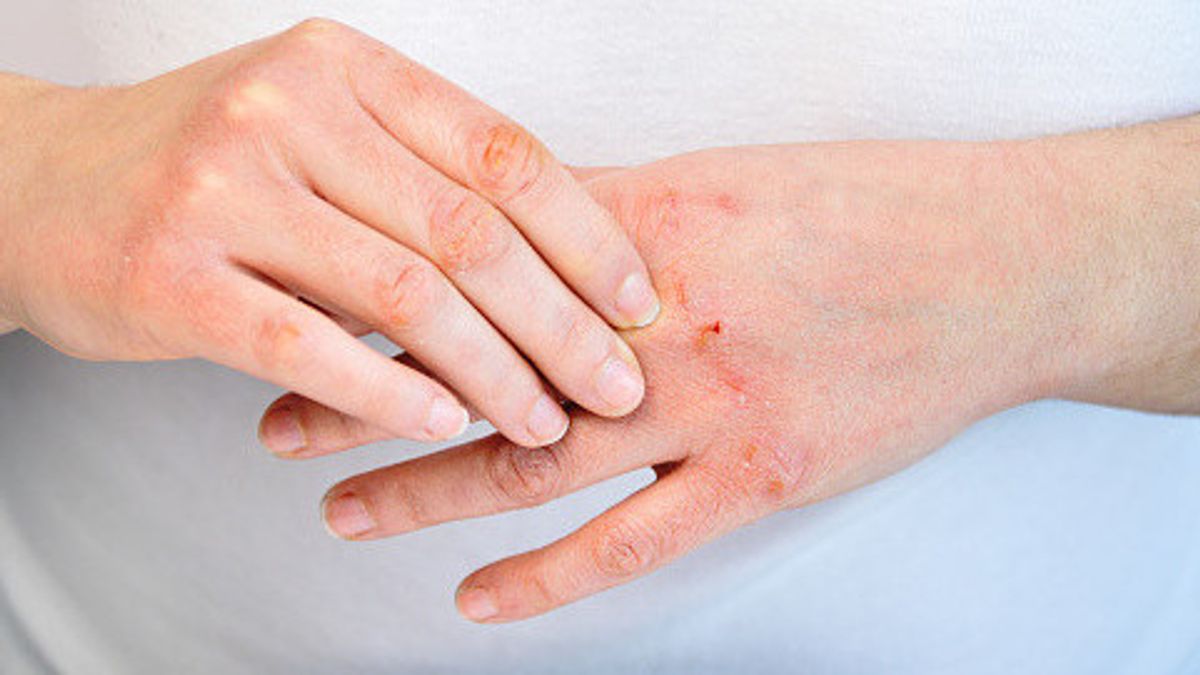YOGYAKARTA – There are various variations of fragrant aromas in detergents, ranging from floral to seasonal scents. But for those of you who have sensitive skin, it's not impossible to have contact dermatitis after using scented detergents.
Contact dermatitis can be triggered by laundry detergent. Common symptoms that appear include a red and itchy rash that extends throughout the body or only in certain areas such as the armpits and groin. Quoting Healthline, Wednesday, June 22, allergies to detergents can develop when first exposed. But it could also be after repeated exposure to a new allergic response. Usually, people who are sensitive to scented detergents can reduce the risk of allergies by using a detergent free of fragrances and dyes.
The cause of allergies, not only because of sensitive skin. But also like most soaps, detergents contain some type of surfactant that works by loosening dirt, oil particles, and allowing them to wash away. Harsh surfactants can irritate people with sensitive skin.
Plus, artificial fragrances fall into another category of chemicals that can also trigger rashes and skin irritation. Although each detergent is formulated differently, we don't really know the ingredients that cause allergies. It can only be identified after exposure to certain types of laundry detergent products. If you find a number of symptoms of contact dermatitis and allergies, then it is better to change the product to one that is more acceptable to your skin.

Other chemicals found in laundry detergents include preservatives, enzymes, parabens, colors and dyes, moisturizers, fabric softeners, thickeners and solvents, and emulsifiers. Mild allergy after exposure to detergent, usually develops slowly after repeated exposure.
There are two types of contact dermatitis, namely irritant and allergic. If you have irritant contact dermatitis, you can develop a rash even if you are not allergic to anything including after exposure to laundry detergent. This type of dermatitis is the most common form of non-allergic skin rash. This occurs when an irritating substance breaks down the layers of the skin causing a rash and itching. Unlike irritant contact dermatitis, allergic contact dermatitis occurs when you have an allergic reaction to a substance. Usually, an allergic reaction will result in an immune response.
Symptoms that make your skin uncomfortable, especially after exposure to irritants or allergens, include a red rash, mild to severe itching, more that may ooze or harden, bumps, dry, cracked, scaly skin, softer skin texture, skin burning, until it swells.
The fix, most rashes can be treated at home with simple remedies and lifestyle changes. Most importantly, it is necessary to identify the chemical that is irritating or triggering an allergic response and then taking steps to avoid it.
Another recommendation, use an over-the-counter steroid cream containing at least 1 percent hydrocortisone, which can help reduce inflammation and itching. You can also try using an anti-itch lotion, or calamine lotion. In some cases, an oatmeal bath can be used to reduce itching and soothe inflamed skin. Can also compress with a cold towel.
The English, Chinese, Japanese, Arabic, and French versions are automatically generated by the AI. So there may still be inaccuracies in translating, please always see Indonesian as our main language. (system supported by DigitalSiber.id)









